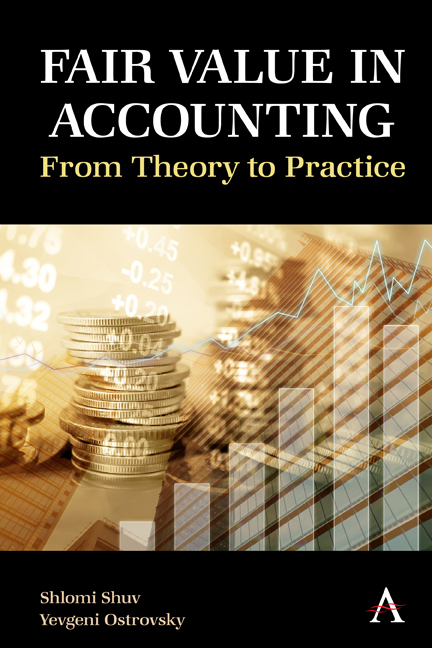Book contents
- Frontmatter
- Contents
- Preface
- Chapter 1 Background
- Chapter 2 Definition and Scope of Fair Value
- Chapter 3 Identifying the Asset or Liability to Be Measured
- Chapter 4 Determining the Market in Which the Transaction Will Take Place
- Chapter 5 Identifying Market Participants
- Chapter 6 Defining the Transaction Price
- Chapter 7 Definition of an Orderly Transaction
- Chapter 8 Fair Value at Initial Recognition
- Chapter 9 Application to Nonfinancial Assets
- Chapter 10 Measuring Fair Value of Liabilities and Equity Instruments
- Chapter 11 Application to Financial Instruments with Netting Positions
- Chapter 12 Valuation Techniques
- Chapter 13 Disclosure Provisions
Chapter 9 - Application to Nonfinancial Assets
Published online by Cambridge University Press: 15 September 2022
- Frontmatter
- Contents
- Preface
- Chapter 1 Background
- Chapter 2 Definition and Scope of Fair Value
- Chapter 3 Identifying the Asset or Liability to Be Measured
- Chapter 4 Determining the Market in Which the Transaction Will Take Place
- Chapter 5 Identifying Market Participants
- Chapter 6 Defining the Transaction Price
- Chapter 7 Definition of an Orderly Transaction
- Chapter 8 Fair Value at Initial Recognition
- Chapter 9 Application to Nonfinancial Assets
- Chapter 10 Measuring Fair Value of Liabilities and Equity Instruments
- Chapter 11 Application to Financial Instruments with Netting Positions
- Chapter 12 Valuation Techniques
- Chapter 13 Disclosure Provisions
Summary
Overview
The fair value basis is relevant, among other things, to the measurement of various classes of nonfinancial assets. Specifically, this basis is relevant, or may be relevant under International Financial Reporting Standards (IFRS), to investment property; property, plant and equipment; intangible assets; biological assets; cash-generating units; or noncurrent assets held for sale (for more details, see Chapter 1, Section 2). While discussing the provisions of the Standards, the International Accounting Standards Board (IASB) and Financial Accounting Standards Board (FASB) reached the conclusion that they should include specific measurement (and disclosure) provisions that are applicable only to nonfinancial assets. In principle, as described in detail below, it may be said that the said guidelines deal with the issue of the highest and best use of non-financial assets and with the related issue of the valuation premise. In practice, these or similar principles existed long before the current Standards were finalized, within general practices for valuation of nonfinancial assets (and within specific practices regarding land appraisal), and those principles were formally incorporated into the Standards. Among other things, the highest and best use principle is incorporated into International Valuation Standards (IVS), as well as into Royal Institution of Chartered Surveyors (RICS) Professional Standards (“Red Book”), which are widely accepted appraisal standards that adopted the IVS. It was also mentioned in Statement of Financial Accounting Standards (SFAS) 157 and in US Generally Accepted Accounting Principles (US GAAP) Concepts Statement 7.
The guidelines regarding the principle of highest and best use and the valuation premise are irrelevant to financial assets or financial liabilities, due to, among other things, the view whereby financial assets and financial liabilities (unlike nonfinancial items) do not have an alternative use, such that the manner in which they are used or utilized depends only on their contractual terms.
The Highest and Best Use Premise
Guiding principle
Generally, the fair value of nonfinancial assets is measured under the highest and best use premise. The Standards define the highest and best use as the use of a nonfinancial asset by market participants that would maximize the value of the asset or the group of assets and liabilities within which the asset would be used, such as a business or a cash-generating unit.
- Type
- Chapter
- Information
- Fair Value in AccountingFrom Theory to Practice, pp. 73 - 88Publisher: Anthem PressPrint publication year: 2022

